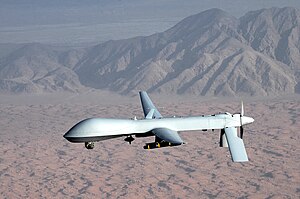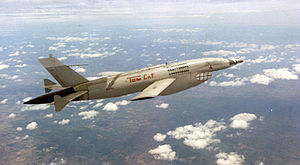
The 67th Cyberspace Operations Group is a unit of the 67th Cyberspace Wing. Headquartered on Kelly Field Annex's Security Hill, the group is an Air Force information operations unit.

The 11th Attack Squadron is a United States Air Force unit assigned to the 432d Wing Air Combat Command at Creech Air Force Base near Indian Springs, Nevada. It flies General Atomics MQ-9 Reaper Unmanned aerial vehicles. In 1995 the 11th became the first Remotely Piloted Aircraft (RPA) squadron in the Air Force.

The 26th Information Operations Wing is an inactive United States Air Force unit. Its last assignment was with United States Air Forces in Europe at Ramstein Air Base, Germany, where it was inactivated on 5 July 2006.

The 20th Intelligence Squadron is a United States Air Force unit, assigned to the 363d Intelligence, Surveillance, and Reconnaissance Group at Offutt Air Force Base, Nebraska. It has served at Offutt since June 1992, when it was activated as the 20th Air Intelligence Squadron.
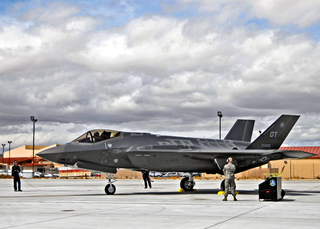
The 53rd Wing is a wing of the United States Air Force based at Eglin Air Force Base, Florida. The wing reports to the United States Air Force Warfare Center at Nellis Air Force Base, Nevada, which in turn reports to Headquarters Air Combat Command.

The 1st Test and Evaluation Squadron is a United States Space Force test and evaluation unit, located at Schriever Space Force Base, Colorado. The squadron is tasked with testing and evaluation of command and control systems for Space Operations Command.
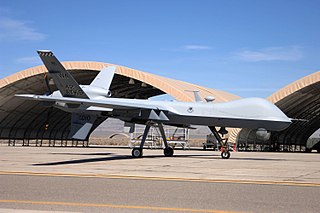
The 432nd Wing is a United States Air Force unit assigned to Air Combat Command at Creech Air Force Base near Indian Springs, Nevada. It flies General Atomics MQ-9 Reaper and RQ-170 Sentinel Unmanned aerial vehicles.
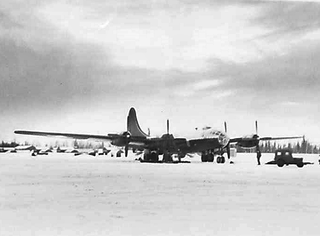
The 311th Air Division is an inactive United States Air Force organization. Its last assignment was with Strategic Air Command at Barksdale Air Force Base, Louisiana, where it was inactivated on 1 November 1949. The division was first activated in 1944 as the 311th Photographic Wing. Although it was stationed in the United States, throughout its existence, the unit was responsible for the control of long range reconnaissance units in multiple theaters.

The 16th Electronic Warfare Squadron is an active United States Air Force unit. It is assigned to the 350th Spectrum Warfare Group at Eglin Air Force Base, Florida. The squadron began as the 16th 16th Aero Squadron and redesignated several times over its history with the 16th Aero Squadron, 16th Reconnaissance Squadron, and the 16 Photographic Reconnaissance Squadron being the major redesignations.

The 25th Flying Training Squadron is part of the 71st Flying Training Wing based at Vance Air Force Base, Oklahoma. It operates Northrop T-38 Talon aircraft conducting flight training.

The 69th Reconnaissance Group is an inactive United States Air Force that was part of Air Combat Command, the group was stationed at Grand Forks Air Force Base, North Dakota where it was a tenant of the 319th Air Base Wing.

The 15th Test and Evaluation Squadron is a United States Air Force unit, stationed at Eglin Air Force Base, Florida and assigned to the 753rd Test and Evaluation Group. It was first activated in the expansion of the United States military forces prior to World War II as the 15th Pursuit Squadron. It moved to Panama in 1942, where it participated in the defense of the Panama Canal. It returned to the United States, where it was a Replacement Training Unit for fighter pilots until 1944, when it was disbanded as the 15th Fighter Squadron in a reorganization of Army Air Forces training units in 1944

The 72d Test and Evaluation Squadron is part of the 53d Wing at Eglin Air Force Base, Florida. The squadron is geographically separated but is operated from Whiteman Air Force Base, Missouri. It conducts testing and evaluation of the B-2 Spirit aircraft.

The 6th Air Intelligence Squadron is an inactive unit of the United States Air Force. Its last assignment was with Seventh Air Force, stationed at Osan Air Base, Korea. It was inactivated in 1993. The unit was originally established at Army Air Base, Colorado Springs, Colorado as the 6th Photographic Group on 5 February 1943, under the command of Lt Waymond Davis. Later that year, the unit was redesignated the 6th Reconnaissance Group and deployed to the southwest Pacific as a component of the Fifth Air Force.

The 10th Tactical Reconnaissance Group is an inactive United States Air Force unit. Its last assignment was to the 10th Tactical Reconnaissance Wing, stationed at Spangdahlem Air Base, West Germany. It was inactivated on 8 December 1957.

The United States Air Force's 543d Intelligence, Surveillance and Reconnaissance Group is an intelligence unit located at Joint Base San Antonio, Texas. It has been located there since 1997, when it was activated as the 543d Intelligence Group. It focuses on cryptologic operations and signals intelligence.

The 3rd Special Operations Squadron is part of the 27th Special Operations Group of the Air Force Special Operations Command at Cannon Air Force Base, New Mexico. It flies MQ-9 Reaper unmanned combat aerial vehicles or "drones"; the 3rd SOS is the first Remotely Piloted Aircraft (RPA) squadron within the AFSOC.
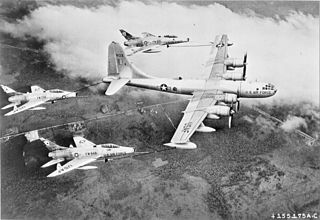
The 622d Expeditionary Air Refueling Squadron is a provisional United States Air Force unit, assigned to United States Air Forces Europe to activate or inactivate as needed. The squadron was first established during World War II as the 22d Photographic Reconnaissance Squadron. It served in the European Theater of Operations, where it earned a Distinguished Unit Citation and a French Croix de Guerre with Palm for its actions in combat.

The 22d Intelligence Squadron is a non-flying squadron of the United States Air Force. It is assigned to the 691st Intelligence, Surveillance and Reconnaissance Group, Fort George G. Meade, Maryland.
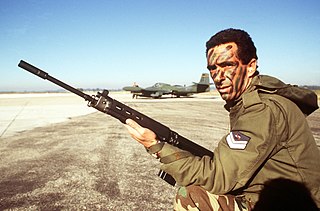
The 24th Tactical Air Support Squadron was a ground attack squadron of the United States Air Force. It was last active at Nellis Air Force Base in Nevada, prior to being inactivated during December 2020.
